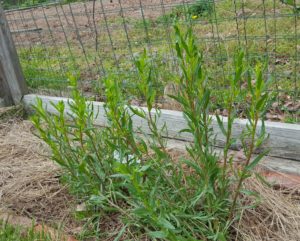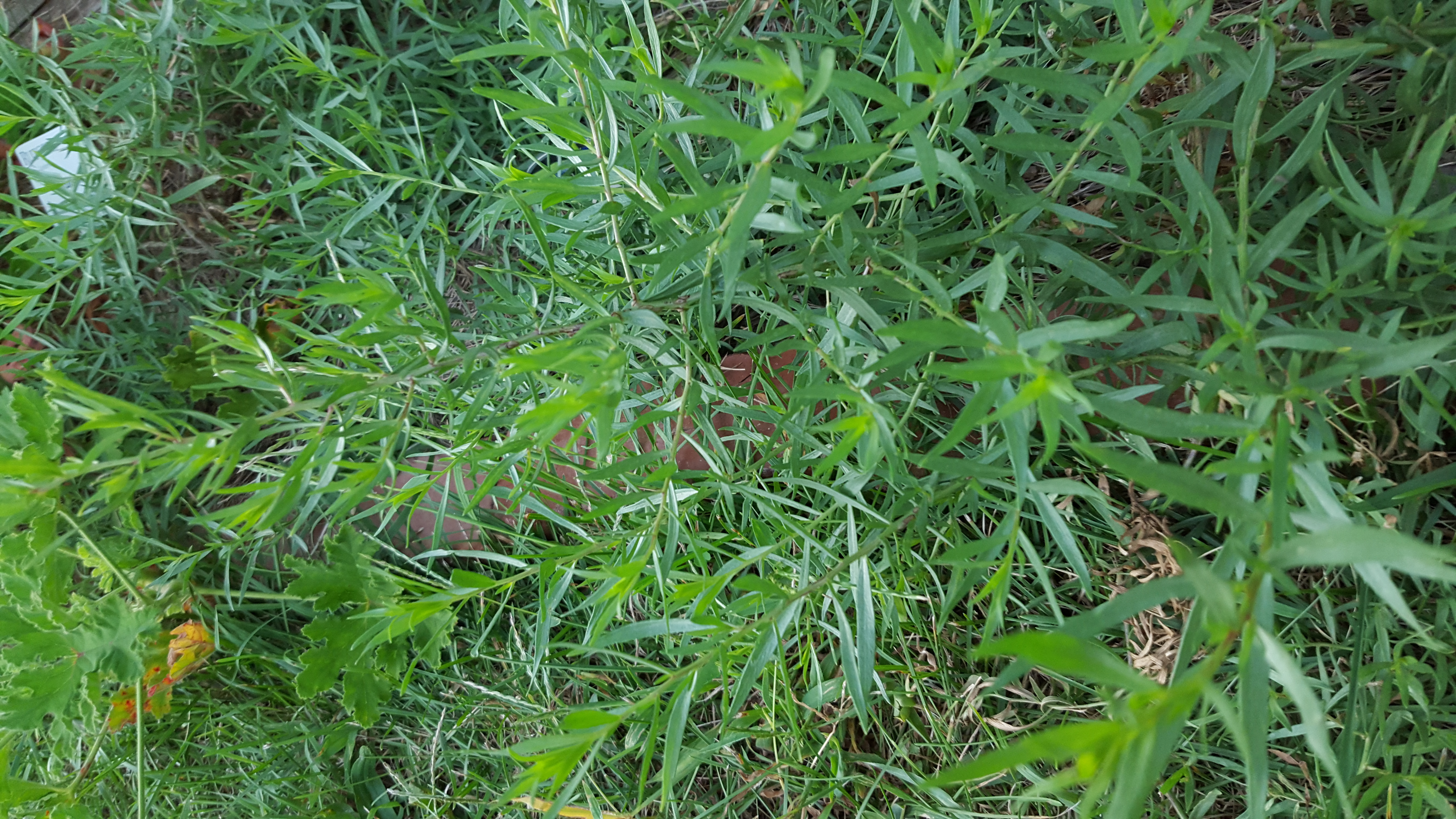 My favorite shrimp salad recipe is flavored with celery and chives, but it’s the fresh tarragon that grabs me. Tarragon, of course, is a classic ingredient in French cooking. It’s the main flavoring in Bérnaise sauce and is a component of fines herbes found in so many recipes. Tarragon is a must in any cook’s herb garden.
My favorite shrimp salad recipe is flavored with celery and chives, but it’s the fresh tarragon that grabs me. Tarragon, of course, is a classic ingredient in French cooking. It’s the main flavoring in Bérnaise sauce and is a component of fines herbes found in so many recipes. Tarragon is a must in any cook’s herb garden.
There are two types of tarragon, Russian tarragon (Artemisia dracunculoides) which is less flavorful and French tarragon (A. dracunculus sativa). Both are related to sunflowers. They are perennial, hardy in zones 4 through 8. The plants become dormant in the winter.
Russian tarragon is easily grown from seed. Once established, it spreads readily via the roots. Russian tarragon plants are quite hardy, drought tolerant and prefer poor soils. They thrive on neglect. Mature plants reach three feet in height with leaves that have a milder flavor than their French cousin. Russian tarragon can be used in any dish where you are looking for a lighter taste.
French tarragon produces sterile seeds so it can never be grown from seed. It is usually propagated by division although you can try cuttings and layering. In France, tarragon is referred to as Herbe au Dragon, the dragon herb, due to the serpentine shape of its roots. Be careful when weeding around your tarragon plants. The roots are very shallow. Divide your plants every three to four years in the spring to prevent crowding.
French tarragon prefers sunny locations with well-drained soils. Let the soil dry out completely between waterings. Tarragon doesn’t like wet feet. If you are growing it in a container, do not mix it with other herbs that need to be watered frequently.
Mature plants will reach a height of three feet. To harvest your tarragon, cut the top ⅓ of each branch. Prune it regularly to keep the entire plant at a height of 2 feet or it may be prone to falling over. That will also prevent flowering which reduces the intensity of the flavor in the leaves.
French tarragon goes well with seafood, poultry, eggs and vegetables. Be careful adding it to soups. The flavor intensifies when cooked and could overpower the other flavors in your soup. If you are partial to tarragon vinegar, simply add a few sprigs to a bottle of vinegar and steep until you achieve the intensity of flavor that you’re looking for.
In ancient times, tarragon was reputed to cure the bites of venomous snakes and rabid dogs. Today, tarragon is used in companion planting. It acts both as a barrier plant, repelling insects, and as a so-called nurse plant, enhancing the growth of vegetables that are planted next to it.
Introduce a taste of France to your garden by planting a “dragon”.


7 Comments on “Tarragon”
Pingback: The ___ ate my tarragon! - Advice From The Herb Lady
Where can we purchase true French Tarragon in the States.
I too live in NJ (Sussex County)
Thanks
French tarragon is widely available in NJ. You can go to Well Sweep Herb Farm in Port Murray or any local herb sale put on by nurseries or your local Master Gardeners should have French tarragon.
Curious how I purchased seed labeled artemisia dracunculus if it cannot be grown from seed? Is this false advertising? It was from a reputable company so I’m torn…
Please re-read what I wrote:
“There are two types of tarragon, Russian tarragon (Artemisia dracunculoides) which is less flavorful and French tarragon (A. dracunculus sativa). Russian tarragon is easily grown from seed.”
The Russian tarragon seeds that you purchased are correctly labelled and should germinate for you. However, they will not taste like French tarragon which is the one that produces sterile seeds.
I bought “French” tarragon twice this summer and the plants look different- one has large leaves that are a much lighter green than the other, which has small leaves that are drier. They both taste of anise, though the plant with the smaller leaves has a much sharper taste.
Is the taste a function of the leaf size or did I get mislabeled tarragon once?
I think one of the plants was mislabelled.